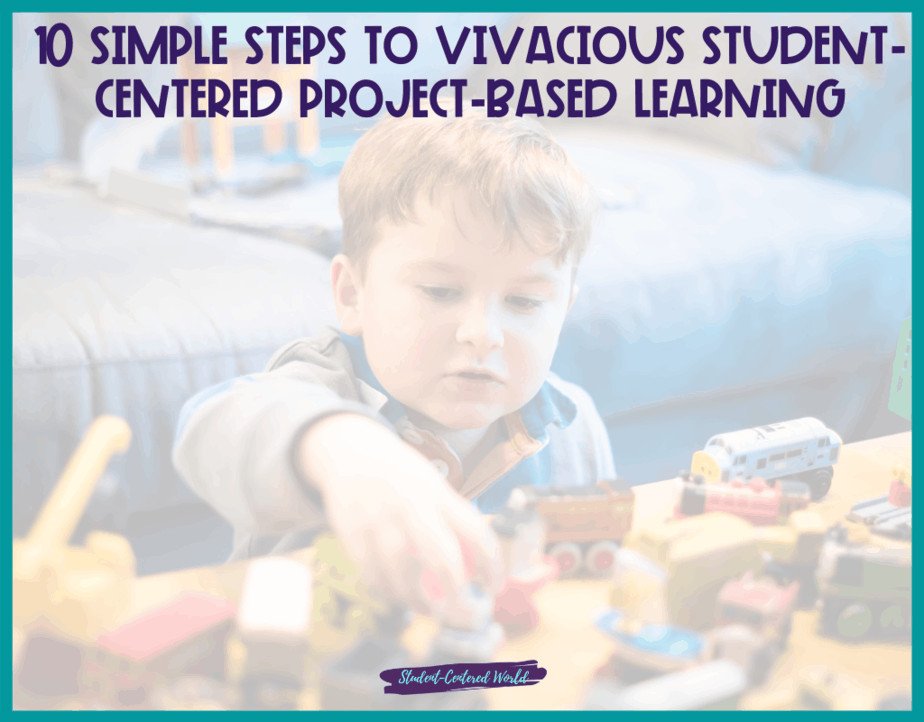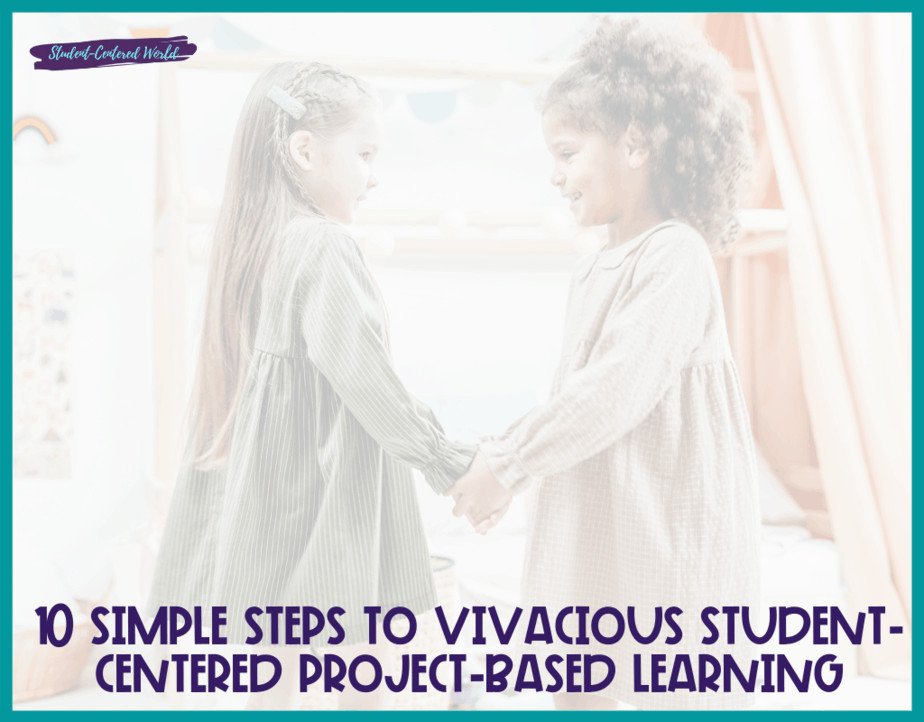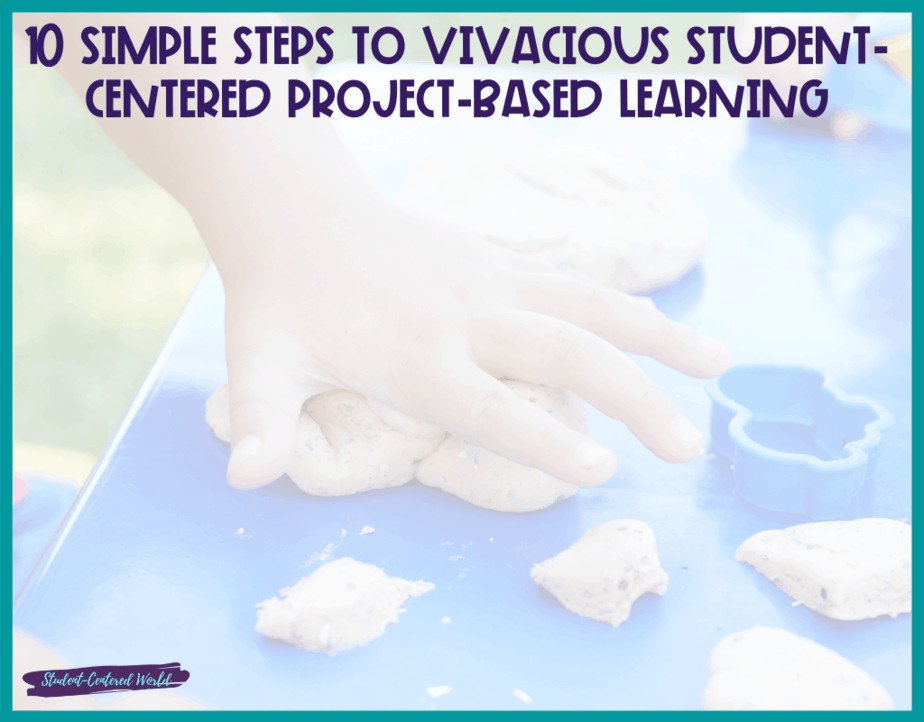10 Simple Steps to Vivacious Student-Centered Project-Based Learning
When many teachers hear the term “student-centered project-based learning” you can see the color drain from their faces. It is such a buzz-wordy term, but it really isn’t as intimidating as it sounds. We all give projects in our classrooms; student-centered project-based learning just puts more responsibility and delegation on behalf of the student and, frankly, is way more fun for you to grade!
Student-centered project-based learning is not only fun for your students, but you will also enjoy it. You will have creative freedom to do things like create your own rubrics, assign projects that fit within the state standards, and let the creativity flow in your classroom!
It sounds complicated though doesn’t it? Don’t worry, I am going to tell you exactly how I run a student-centered project-based learning classroom.
Breaking it down:
Student-centered – The focus is on the student. It is what they are interested in, what they want to learn about, etc. (This can be done with an entire class or within small groups.)
Project-based – Each project includes a culminating activity that allows for students to demonstrate their learning through a product.
Learning – Often times these projects include students doing something they have never done before, learning new skills, or taking on responsibility that they normally would not be assigned in traditional teaching methods. (The best part of all!)

What is the difference between project-based learning and student-centered project-based learning?
Project-based learning has been around for years; it just hasn’t gotten a lot of press in the classroom. Project-based learning is where you assign your students to complete projects that require logical thinking, creativity, synthesis of information, and presentation. Project-based learning was the backbone of my classroom, but it can be very difficult to grade and keep track of student progress. My student-centered project-based learning classroom takes that same idea of project-based learning and puts more power into the students’ hands.
Students have to think about the big picture instead of only completing a specific task. I assign students a project that is to be completed within the given time frame. The goal of the student-centered project-based learning classroom is not for me to grade and grade papers, but rather for the students to take more responsibility and be graded themselves. Without further ado, here are my top 10 tips on how to run a successful student-centered project-based learning classroom:
10. Give students the choice of their projects, but make it clear that you are not going to be grading these projects and that the purpose is for them to learn and share with peers. You must also inform parents of this format during parent conferences. This way, they will know what they are getting into and how they can help their child.
The projects I give my students are usually something that they want to do. They may have seen a video on YouTube, heard about it from a friend, or thought of an idea in class one day when we were learning about something new. Example: A science colleague of mine mentioned that the human body is 60% water and this got her students thinking. They did a search on the internet for different projects that would further explain the topic of how much water humans need each day.
One group made a music video, another used Google Earth to find all the bodies of water in our area, another created some sort of graph, and yet another group create a WebQuest to teach other students about hydration.
One thing I ask my students is that if they have never heard of a project before, or even thought of doing something like this before, do not choose it as their project. Although the purpose of student-centered project-based learning is for them to learn new things and become independent learners, I do not want them to feel overwhelmed.
9. When selecting projects for your students to complete, try and pick ones that:
- Are something they have never done before
- Give the students a chance to create or make something new
- Ask them to think logically about real-life situations (Not just about what went on in class on Tuesday)
- Use Google, Bing images, or videos to explain their topic (Not only websites that you have specifically told the students to look at.)
- Have the students combine information from different sources to create something new
I have found that by giving my students these guidelines, they do a much better job at finding “real-life” projects to complete. I will often give my students different possible ideas and let them decide which one they want to complete. You just need to make it clear that you will not be grading their choice of project.

8. When the students have selected a topic, make a list of steps that need to be completed and/or written down on an index card or piece of paper (depending on what is allowed by your school). Give each step a due date so they know exactly when something must be done. These steps should be detailed, but not too much. I find that asking my students to do a lot of research before making something can sometimes overload them and cause them to take longer than expected or just say “I tried” and not complete the project at all.
Also, make sure that you do not assign a timescale for any step. For example, “Go on YouTube and search for videos about your topic.” I have found that by giving this kind of step, students will not complete the project because they find a video that is very interesting and watch too much. They may even get out of hand with their research and decide to change their project. This is of the essence in terms of successfully timing student-centered project-based learning assignments.
7. When you have received the completed projects from your students, contact each group individually and meet with them. Remember that they are your students, not just a product you can leave on their desks. Ask them questions about their project such as what they learned or what they had problems with. Then, let them give you a presentation of their project so you can find out if they actually did what you asked (This makes them feel good because they get to show off their hard work).
By asking your students questions, they may be more willing to help you with your lesson plan or even just in the classroom. Also, the presentations are fun for everyone!
6. When grading these projects, try and grade by how long they worked on their project (tell students beforehand how long they have to work on it), the quality of what they created, and making sure they followed all the steps given by you. I have found that this grading method helps students know if the grade was a low one because I did not like their project or because they did not work for as long as you told them to.
5. When the students are all done with their projects, I recommend that you have a class open house where anyone can see any of the projects and ask questions about them. This is an opportunity for everyone to learn more about what goes on in your class! I often would let the principal know and he would make an appearance to check out their work, which was always exciting for the students to “show off”. They became incredibly proud of their student-centered project-based learning results.
4. When you have received all the projects from your students, make a list of them on the board and ask for volunteers to come up and talk about their projects. If there is time, I would also recommend having all of the parents come into class or set up some type of school-wide display so others can see what the class created.

3. After you have assigned possible topics, allow the students to pick which one they want to do (again, this will be a choice not controlled by you). I have found that my students are more likely to do a good job on these projects when they feel a level of ownership over their projects.
2. When assigning topics, you would want to choose things that many people would be interested in seeing or reading about. However, you must also make sure that anyone who is interested in this topic could actually make a project about it. This means that if you have students who are very young or some that do not know English well, you should probably choose something different for them.
1. The first thing I always do is make sure that my students get into the right mindset of what we will be doing at the beginning of class each day (use of positive phrases, etc.).
Using the 4 keys for student-centered project-based learning
I hope that you try some of these things in your classroom. AIt is often difficult to think of new and exciting ways to keep students engaged and interested. So if you find yourself struggling with this in the future (and we all do), just remember the little things that I mentioned above and you should be fine.
One warning about student-centered project-based learning is this: You should only use it for activities where you have a curriculum guide to help students with their academic success. In other words, if you know that this is going to be a project that they have never done before, you need to have a plan in place so students can successfully complete the activity.
For example, if you are having them build something or write something that has never been tried before then it is imperative for your classroom that all materials needed are provided (e.g., paper, pencils, staplers) and that you have a plan in place to help guide them through the process.
Stop Driving the Teacher Struggle Bus
Are you struggling with student engagement, apathy, or keeping your class on track?
💫💫 There’s hope! 💫💫
Join my free teacher workshop “Choosing Choice” and in just 60 minutes, you’ll craft a practical plan to revitalize your teaching. Discover the magic of student choice in boosting engagement, gain quick implementation ideas, and explore strategies for year-long success.
Unlike overwhelming workshops, my approach guides you in real-time, providing more classroom options, reducing stress, and giving you more personal time.
Plus, you’ll earn a 1-hour professional development certificate and have 7 days of access.
Don’t miss this chance to transform your teaching; click below to secure your spot now!






